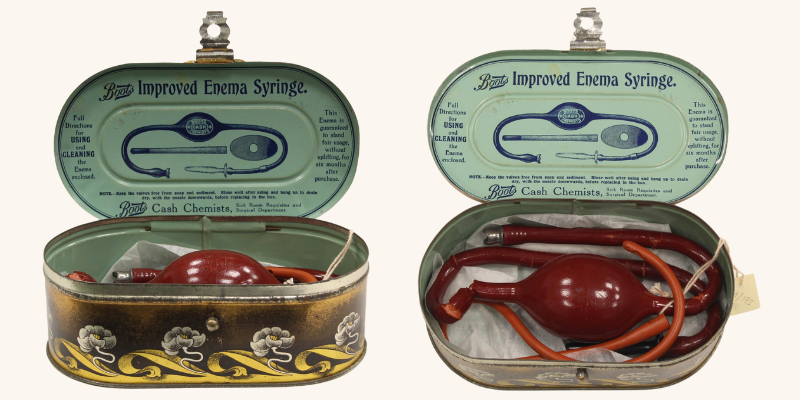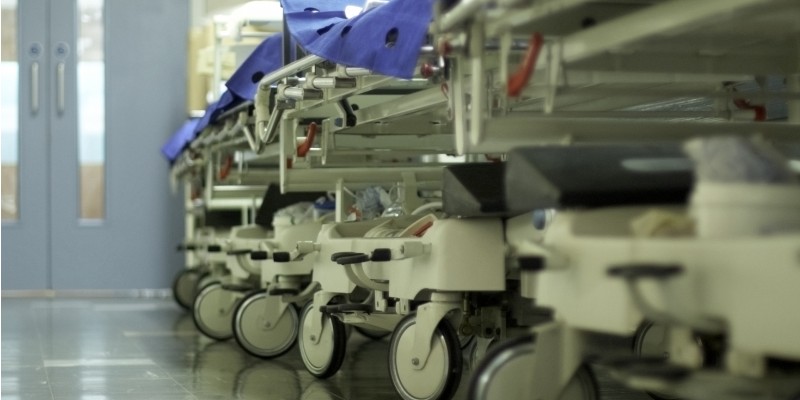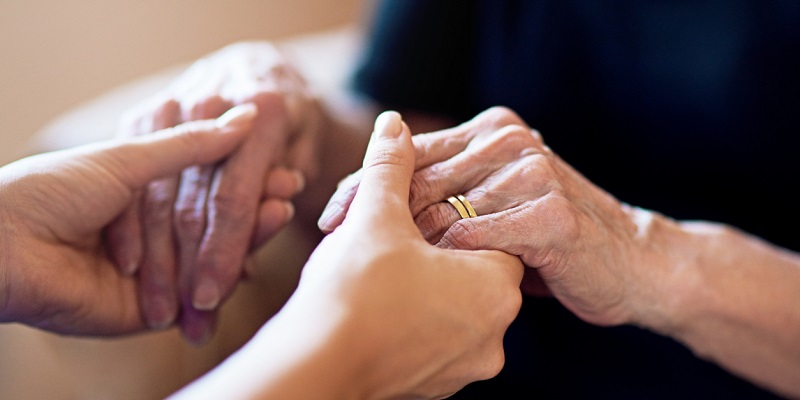News
Object Highlight – Enema Territory
If you follow us on social media, you may have seen our first Object of the Month post in July – a 1920s ‘Improved Enema Syringe’ produced by Boots, the Chemist.

Connect with us:
The exterior of this tin is decorated in an art nouveau style, likely by the method of lithographic printing. The tin is a deep brown with golden areas and is embellished around the edges with white magnolia-like flowers and an undulating gold ribbon which resembles leaves. The inside of the tin is a light blue-green colour and includes detailed instructive text as well as a diagram.
Despite its beautiful exterior, the object contained within actually had a far less glamourous use. An enema syringe, sometimes referred to as a clyster, is used to insert liquid or gas into the rectum with the aim of emptying the bowls, administering a drug, or allowing for an examination. Inside the Boots tin there are directions for using and cleaning the syringe alongside recommendations for a ‘purgative injection’, and injections for worms, piles and bleeding piles. In our example, the instructions are obscured by a piece of rubber stuck to the tin, but they are visible in this comparative example.
The enema has been in use in some form since at least 1,500 B.C. and is even mentioned in the oldest existing medical text, the Ancient Egyptian Ebers Papyrus. It is said that the technique was learned from watching the Ibis bird clean decaying food from its rectum by using water in its curved beak. The 1800s saw a notable increase in the use of enemas, and it became increasingly common for these to be administered by a spouse or lover. The type seen here is a Bulb enema which was introduced in the middle of the nineteenth century. The tool essentially just consisted of a rubber bulb with a tube attached at both ends, one of which would be inserted into the rectum and the other into a liquid solution. It was also common for enema kits to include fittings that could be attached to the tubes for the ease of insertion.
This particular enema syringe belonged to M. Williams, a nurse qualified in midwifery and who, upon her retirement in 1958, was Matron at Mount Pleasant Hospital in Chepstow.











